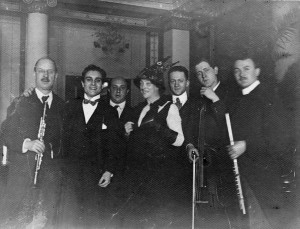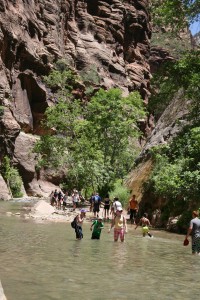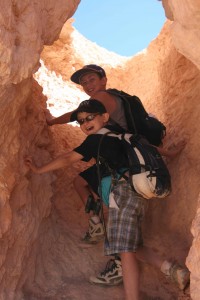The latest in a 100-year effort to scare people away from the music of Arnold Schoenberg is a blog by Bill Eddins, It’s Schoenberg’s Fault!
I did an interview with a reporter from Minnesota Public Radio yesterday exploring the difficulties being faced by the Minnesota Orchestra and the St. Paul Chamber Orchestra. After a thorough dissection of the mistakes that led up to this current mess with both orchestras, and much of the classical music industry thereto, I have come to one undeniable conclusion – it’s Schoenberg’s fault.
His theory is that ordinary people will not listen to ANY classical music, because orchestras sometimes program works by Schoenberg, Berg and Webern. Ok. That’s one theory. But I have another.
I suppose it is possible that Mr. and Mrs. Joe and Josephine Average (as Eddins calls them) discuss whether or not to go to a classical music concert, and Mr. Average says to his wife, “You know, honey, I’ve heard Schoenberg’s Three Pieces for Chamber Orchestra and I just don’t like it. So let’s not go to the concert tonight (whatever they are playing). I just don’t want to listen to any classical music ever again.” But I think there is a more likely scenario.
Mr. and Mrs. Average are prejudiced. They have probably never heard a note of music by Schoenberg, Berg or Webern and certainly could not tell the difference between their music and that of Stravinsky, Bartok or Ives, about which Eddins writes that “people are excited to hear it” and “jump to their feet.”
What sends the audience away is not the music, it’s the hype. It is prejudice. Literally, people have been taught by Mr. Eddins and others to pre-judge the music before they even listen to a note of it. They see the name on the program, figure they won’t like the music because they’ve heard that it’s hard to like, and stay away. Eddins is a purveyor of hatred and prejudice.
I am not suggesting that every person will love every note of Schoenberg’s music. It is often not easy, especially on a first listening. But, as Eddins points out, audiences often love difficult music. They just have to know that it’s ok to like it. Honestly, is it Schoenberg’s fault that people like Eddins write articles and give interviews suggesting that if an orchestra programs Verklaerte Nacht, Pelleas und Melisande, Gurrelieder, Monn Cello Concerto, Theme and Variations or Suite for String Orchestra, or even the Brahms or Bach orchestrations, that “subscription renewals drop like a paralyzed falcon”? Do Mr. and Mrs. Average really appreciate Stravinsky’s Le Sacre de Printemps and Bartok’s Concerto for Orchestra more than Schoenberg’s Chamber Symphonies One and Two?
Ah, Eddins might say, you are not mentioning the more difficult works like Five Pieces for Orchestra or the twelve-tone Variations for Orchestra, Violin Concerto or Piano Concerto. But that’s the whole point. Eddins doesn’t differentiate those works in his post either. He writes, about all of it, “this music does not seem to speak to most people’s souls.” Really? All of it?
The real problem is that audiences have been prejudiced against ALL music by Schoenberg, as if they are required to like and appreciate every note. It is an impossible standard, especially for the “average” music-lover who only wants a certain type of music (one that he is familiar with). Do Mr. and Mrs. Average need to avoid Petrouschka because they won’t like the Requiem Canticles?
Schoenberg goes in many other directions (as do Stravinsky, Bartok and Ives), and that puts some people off. As Schoenberg explained in his brief note:
My music is supposedly not emotional.
Of course, it is not: “Oh, darling! You are so wonderful; I love you so much.”
There are also other kinds of love, for instance Alberich’s, Monostaten’s, Don Juan’s but also Petrarca’s (not expecting early reward).
There are also different kinds of emotion.
There is jealousy, hatred, enthusiasm.
There is love of ideals, of virtues, of one’s country, town or village and its inhabitants.
There is not only joy,
There is also sadness, mourning, pity and envy.
There is also anger;
There is contempt, pride, devotion, madness, fear, panic, courage, admiration.
Love of justice, of honesty, of good manners.
Love of good food and drinks and of the beauty of nature; of animals, flowers and exotic stones.
Love of a bird’s song and of competitive games.
No need for Schoenberg to apologize. It really is not his fault. Eddins and his ilk, preaching prejudice to the uninformed, are what is hurting classical music.




